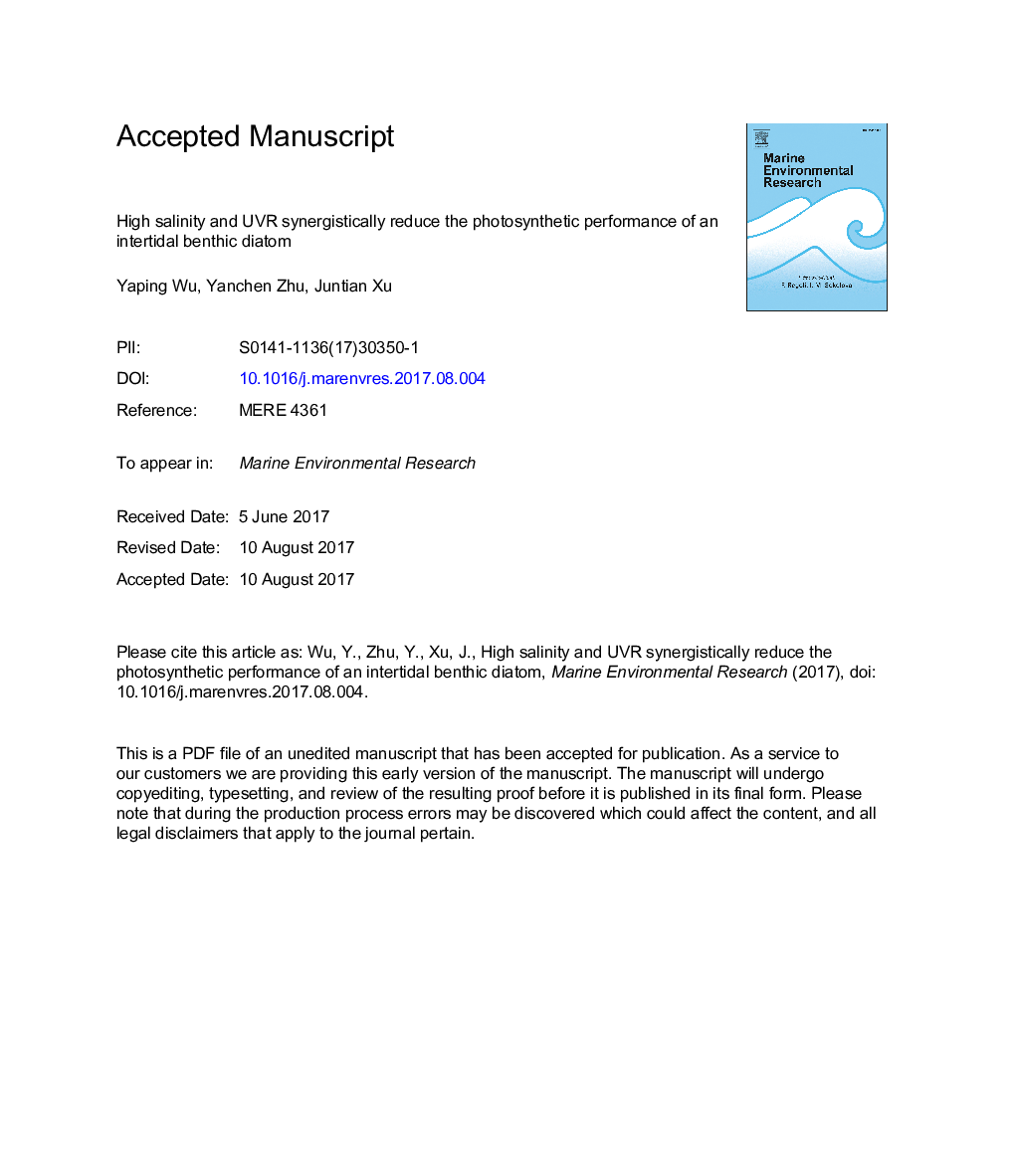| Article ID | Journal | Published Year | Pages | File Type |
|---|---|---|---|---|
| 5766164 | Marine Environmental Research | 2017 | 23 Pages |
Abstract
The intertidal flat is an important intermediate ecosystem characterized by abrupt fluctuations of some environmental factors. As a major contributor to coastal primary productivity, benthic diatoms have to cope up with these fluctuating conditions, such as variations in salinity and light. In this study, we used a typical benthic diatom, Nitzschia sp., to investigate how the photosynthetic performance of a benthic species responded to coupled stresses of high salinity and simulated sunlight. Results showed that their responses were largely dependent on the spectra of light they received. Further, ultraviolet radiation (UVR) interacted with high salinity more effectively than photosynthetically active radiation (PAR), which synergistically reduced the photochemical performance of photosystem II (PSII). The different responses to PAR and UVR were mainly attributed to the repair processes of PSII. Under high salinity, particularly for cells exposed to UVR, the repair rate was significantly lower than those under the control treatment. The present work suggests that UVR, rather than PAR, could be more important in influencing the benthic diatom under high salinity conditions.
Related Topics
Physical Sciences and Engineering
Earth and Planetary Sciences
Oceanography
Authors
Yaping Wu, Yanchen Zhu, Juntian Xu,
